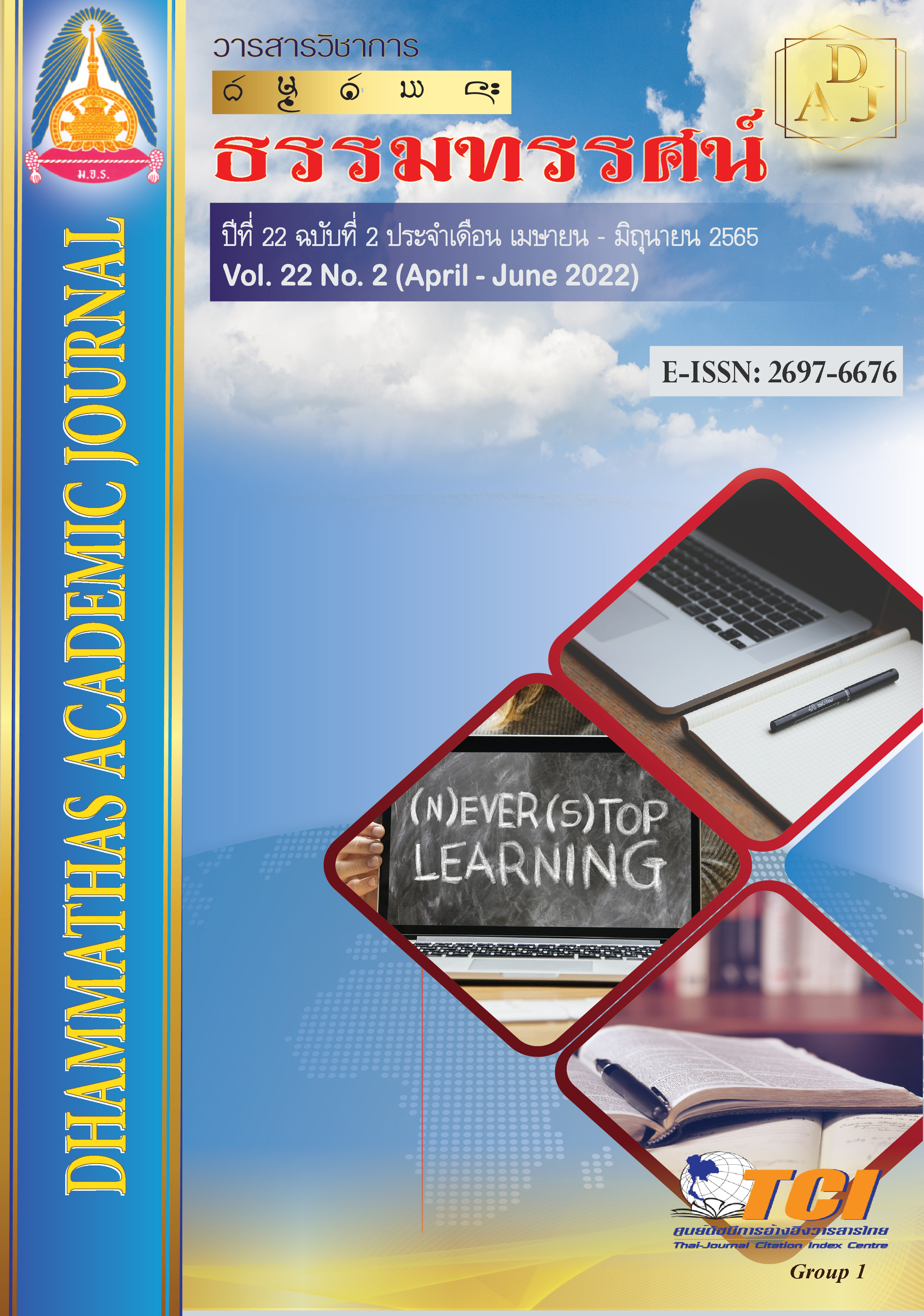Teacher Development Model inLearning Management that Promotes Creative Thinking Skills of Secondary Schools in Surat Thani Province under The Secondary Educational Service Area Office, Surat Thani and Chumphon
Main Article Content
Abstract
The purpose of this research are to study the problem conditions of teacher development and learning management that promotes creative thinking skills; 2) to develop a model of teacher development in learning management that promotes creative thinking skills; and 3) to evaluate the use of the teacher development model in learning management that promotes creative thinking skills of secondary schools in Surat Thani province under the Secondary Educational Service Area Office, Surat Thani and Chumphon. The research and development. The sample group consisted of 335 administrators and teachers using the table of Krejecie & Morgan. The target group consisted of 16 teachers using the table of Purposive Sampling. The tool is used as a problem condition questionnaire, a suitability assessment, cognitive tests, and satisfaction questionnaires. The data were analyzed by using basic statistics such as mean standard deviation and t-test.
The research results revealed as the following:
1. The problem conditions of teacher development and learning management that promotes creative thinking skills overall were at high levels, sorted in the following order were: The teacher development today focuses on lecturing rather than putting teachers into practice. The development of teacher at present emphasizes on the operation development of structures rather than the development of learning management or follow-up supervision to monitor teacher development in learning management that promotes creative thinking skills.
2. The results of the development of a learning management model that promotes creative thinking skills showed that the model consists of principles, objectives, contents, development methods, and measurement and evaluation. The overall of suitability assessment results were at the highest levels.
3. The results of the evaluation of using the teacher development model in learning management that promote creative thinking skills indicated that the scores on understanding before and after the trainings were statistically significant difference at the .01 level. In addition, satisfaction in using the teacher development model in learning management that promotes creative thinking skills was on the whole at the highest level.
Article Details

This work is licensed under a Creative Commons Attribution-NonCommercial-NoDerivatives 4.0 International License.
เพื่อให้เป็นไปตามกฎหมายลิขสิทธิ์ ผู้นิพนธ์ทุกท่านต้องลงลายมือชื่อในแบบฟอร์มใบมอบลิขสิทธิ์บทความ ให้แก่วารสารฯ พร้อมกับบทความต้นฉบับที่ได้แก้ไขครั้งสุดท้าย นอกจากนี้ ผู้นิพนธ์ทุกท่านต้องยืนยันว่าบทความ ต้นฉบับที่ส่งมาตีพิมพ์นั้น ได้ส่งมาตีพิมพ์เฉพาะในวารสาร วิชาการธรรม ทรรศน์ เพียงแห่งเดียวเท่านั้น หากมีการใช้ ภาพหรือตารางของผู้นิพนธ์อื่นที่ปรากฏในสิ่งตีพิมพ์อื่นมาแล้ว ผู้นิพนธ์ต้องขออนุญาตเจ้าของลิขสิทธิ์ก่อน พร้อมทั้ง แสดงหนังสือที่ได้รับการยินยอมต่อบรรณาธิการ ก่อนที่บทความจะได้รับการตีพิมพ์References
ทวีศักดิ์ จินดานุรักษ์. (2560). ครูและนักเรียนในยุคการศึกษาไทย 4.0. วารสารอิเล็กทรอนิกส์การเรียนรู้ทางไกลเชิงนวัตกรรม, 7(2), 14-29.
ภัทร์ธีรา ปลื้มจิตต์. (2562). โปรแกรมพัฒนาครูด้านการออกแบบการเรียนรู้การคิดสร้างสรรค์ของนักเรียน สำหรับโรงเรียนสังกัดสำนักงานเขตพื้นที่การศึกษามัธยมศึกษา เขต 21. (วิทยานิพนธ์การศึกษามหาบัณฑิต). มหาสารคาม: มหาวิทยาลัยมหาสารคาม.
มารุฒ พัฒผล และวิชัย วงษ์ใหญ่. (2562). การเรียนรู้เพื่อเสริมพลังสร้างสรรค์สังคม (Social Creativity). กรุงเทพฯ: ศูนย์ผู้นำนวัตกรรมหลักสูตรและการเรียนรู้.
ลัดดาวัลย์ นงประโคน. (2560). การจัดการเรียนรู้แบบสะเต็มศึกษา เพื่อพัฒนาผลสัมฤทธิ์ทางการเรียนและความสามารถในการคิดสร้างสรรค์ในชั้นเรียนวิทยาศาสตร์ของนักเรียนระดับชั้นมัธยมศึกษาปีที่ 2. (วิทยานิพนธ์ครุศาสตรมหาบัณฑิต). มหาสารคาม: มหาวิทยาลัยราชภัฏมหาสารคาม.
สำนักงานเขตพื้นที่การศึกษามัธยมศึกษาสุราษฎร์ธานี ชุมพร. (2563). แผนปฏิบัติการประจำปีงบประมาณ 2564. สุราษฎร์ธานี: กลุ่มนโยบายและแผน.
สำนักงานเลขาธิการสภาการศึกษา. (2560). ระบบและรูปแบบการพัฒนาครูที่เหมาะสมกับสังคมไทยและความเป็นสากล. กรุงเทพฯ: พริกหวานกราฟฟิค.
อุบล หนูฤกษ์. (2563). รูปแบบการพัฒนาครูในการจัดการเรียนรู้โดยใช้การสร้างสรรค์เป็นฐาน โรงเรียนในเครือข่ายเกาะพะงัน สังกัดสำนักงานเขตพื้นที่การศึกษาประถมศึกษาสุราษฎร์ธานี เขต 1. (วิทยานิพนธ์ครุศาสตรมหาบัณฑิต). สุราษฎร์ธานี: มหาวิทยาลัยราชภัฏสุราษฎร์ธานี.
อุมาพร ทองมาก. (2563). การพัฒนาครูในการจัดการเรียนรู้แบบโครงงานของเครือข่ายสินปุนตาปี สังกัดสำนักงานเขตพื้นที่การศึกษาประถมศึกษาสุราษฎร์ธานี เขต 3. (วิทยานิพนธ์ครุศาสตรมหาบัณฑิต). สุราษฎร์ธานี: มหาวิทยาลัยราชภัฏสุราษฎร์ธานี.
Guiford, J. P. (1967). The discovery of aptitude and achievement variables. International Journal of Science Education, 26(106), 279-282.
Krejcie, R. V. & Morgan, D. W. (1970). Determining sample size for research activities. Educational and Psychological Measurement, 30(3), 607-610.

